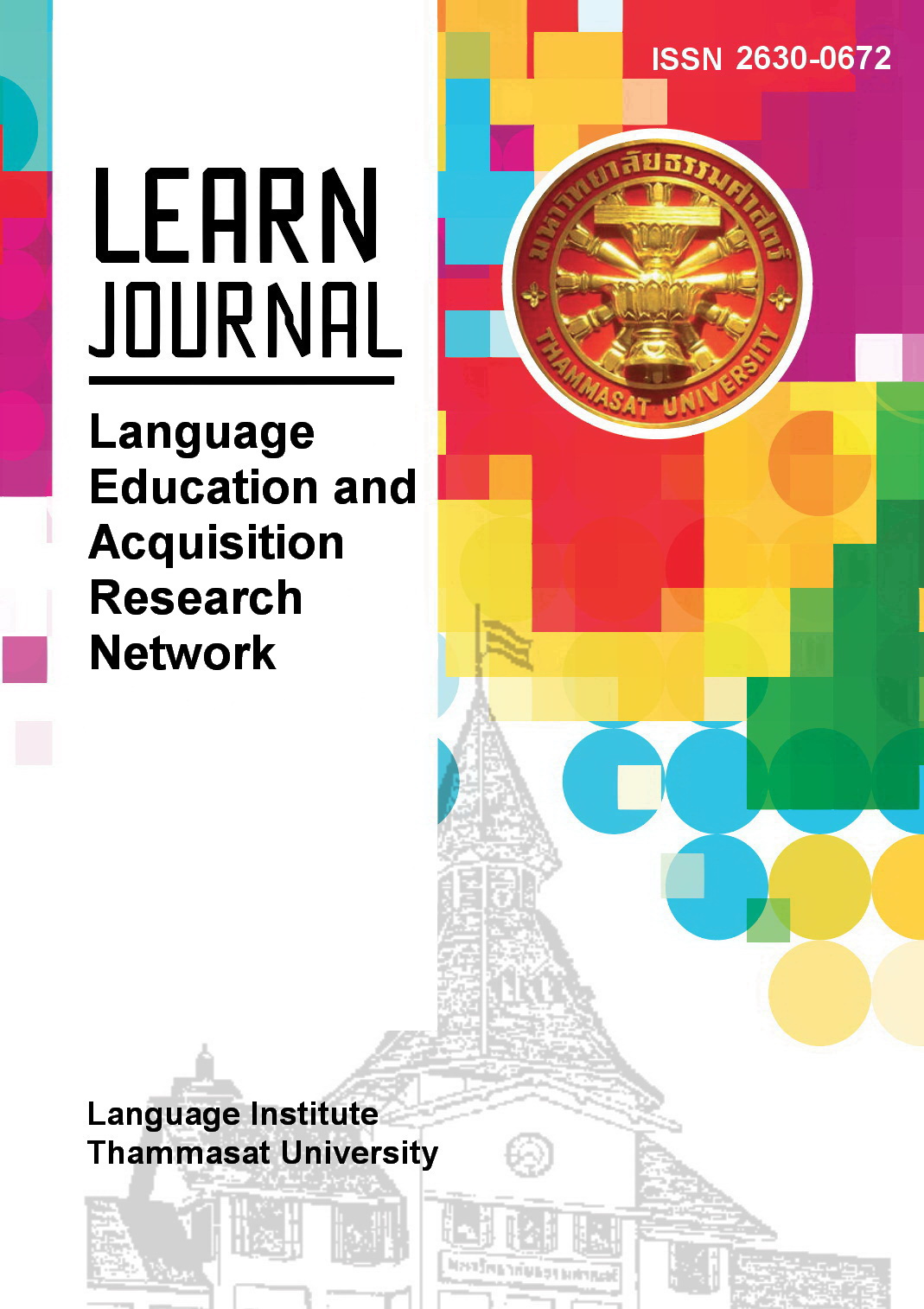Diverse Conceptualizations of “Competence” in Second Language Research and Teaching
Main Article Content
Abstract
This article traces the intellectual roots and developments of the notion of competence in second language (L2) teaching and research. Since L2 teaching and research invariably concern competence of some sort (linguistic, communicative, interactional, or otherwise), there have been countless attempts to define competence from diverse theoretical perspectives, resulting in a plethora of definitions as well as debates, confusions, and tensions. As global mobility and technological advancements prompt us to question traditional assumptions in our field, it is high time to take stock of how the notion of competence has been dealt with in L2 teaching and research. With a particular focus on interactional discourse, this short article offers a glimpse into the conceptual diversity regarding competence and facilitate further exploration of how it may be researched and fostered in view of modern-day complexities. The article concludes with a discussion of pedagogical implications and controversies.
Article Details
References
Canagarajah, S. (2018). Translingual practice as spatial repertoires: Expanding the paradigm beyond structuralist orientations. Applied Linguistics, 39(1), 31–54.
Canale, M. (1983). From communicative competence to pedagogy. In J. Richards and R. Schmidt (eds), Language and Communication (pp 2– 27). Longman.
Canale, M., & Swain, M. (1980). Theoretical bases of communicative approaches to second language teaching and testing. Applied Linguistics, 1, 1–47.
Cazden, C. B. (1996). Communicative competence: 1966-1996. Paper presented at American Association of Applied Linguistics. Chicago, IL.
Chomsky, N. (1965). Aspects of the theory of syntax. MIT Press.
Cook, V., & Li, W. (Eds.). (2016). The Cambridge handbook of linguistic multi- competence. Cambridge University Press.
Duff, P. A. (2002). The discursive co-construction of knowledge, identity, and difference: An ethnography of communication in the high school mainstream. Applied Linguistics, 21(3), 289–322.
Ellis, R. (1990). A response to Gregg. Applied Linguistics, 11(4), 384–391.
Eskildsen, S. W. (2018). Building a semiotic repertoire for social action: Interactional competence as biographical discovery. Classroom Discourse, 9(1), 68–76.
Firth, A., & Wagner, J. (1997). On discourse, communication, and (some) fundamental concepts in SLA research. Modern Language Journal, 81(3), 285–300.
Gregg, K. R. (1990). The variable competence model of second language acquisition, and why it isn’t. Applied Linguistics, 11(4), 364–383.
Hall, J. K. (1995). “Aw, man, where you goin’?’’: Classroom interaction and the development of L2 interactional competence. Issues in Applied Linguistics, 6(2), 37–62.
Hall, J. K., & Doehler, S. P. (2011). L2 interactional competence and development. In J. K. Hall, J. Hellermann, & S. Pekarek Doehler (Eds.), L2 Interactional Competence and Development (pp. 1–15). Multilingual Matters.
Hazel, S. (2017). Mapping the langscape: Developing multilingual norms in a transient project community. Journal of Linguistic Anthropology, 27(3), 308–325.
Hymes, D. (1972). On communicative competence. In B. Pride and J. Holmes (Eds.), Sociolinguistics (pp. 269–293). Penguin.
Kimura, D., & Canagarajah, S. (2020). Embodied semiotic resources in Research Group Meetings: How language competence is framed. Journal of Sociolinguistics, 24(5), 634–655.
Li, W. (2018). Translanguaging as a practical theory of language. Applied Linguistics, 39(1), 9–30.
Markee, N., & Kasper, G. (2004). Classroom talks: An introduction. Modern Language Journal, 88(4), 491–500.
Mehan, H. (1980). The competent student. Anthropology & Education Quarterly, 11(3), 131–152.
Sacks, H. (1984). On doing “being ordinary.” In J. M. Atkinson (Ed.), Structures of social action: Studies in conversation analysis (1st ed., pp. 413– 429). Cambridge University Press.
Sacks, H., Schegloff, E., & Jefferson, G. 1974. A simplest systematics for the organization of turn-taking for conversation. Language 50, 696– 735.
Seidlhofer, B. (2004). Research perspectives on teaching English as a lingua franca. Annual Review of Applied Linguistics, 24, 209–239.
Tarone, E. E. (1990). On variation in interlanguage: A response to Gregg. Applied Linguistics, 11(4), 392–400.
Taylor, D. S. (1988). The meaning and use of the term “competence”
in linguistics and applied linguistics. Applied Linguistics, 9(2), 148– 168.
Taguchi, N., & Roever, C. (2017). Second language pragmatics. Oxford University Press.
Toohey, K. (2019). The onto-epistemologies of new materialism: Implications for applied linguistics pedagogies and research. Applied Linguistics, 40(6), 937–956.
Widdowson, H. G. (1989). Knowledge of language and ability for use. Applied Linguistics, 10(2), 128–137.
Young, R. (1999). Sociolinguistic approaches to SLA. Annual Review of Applied Linguistics, 19, 105–132.


